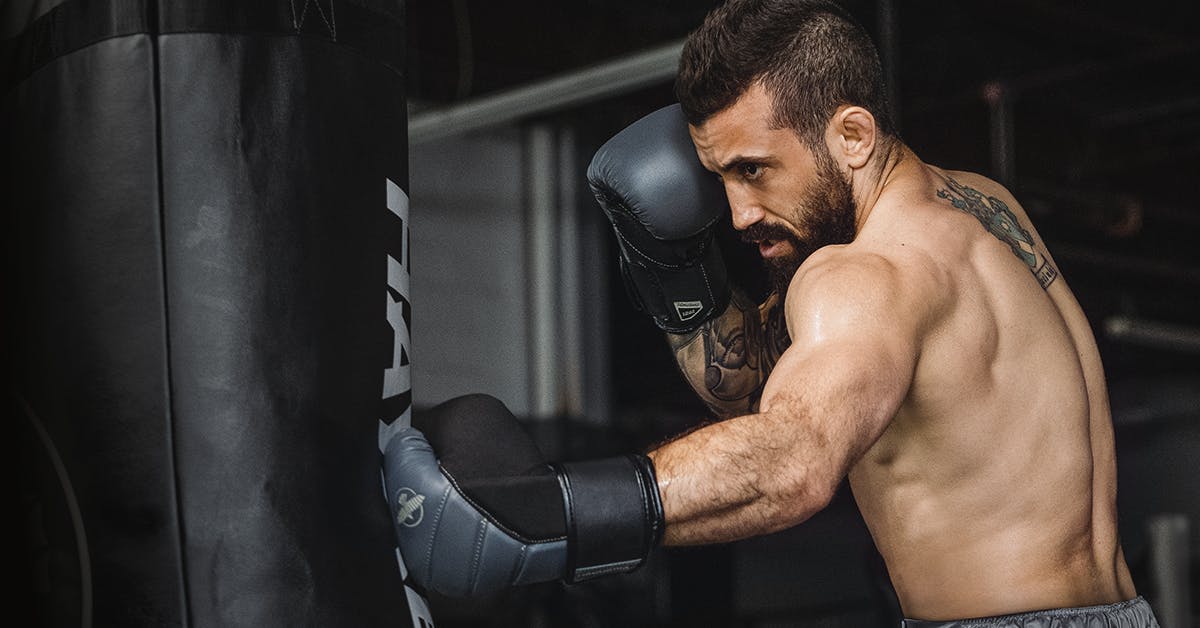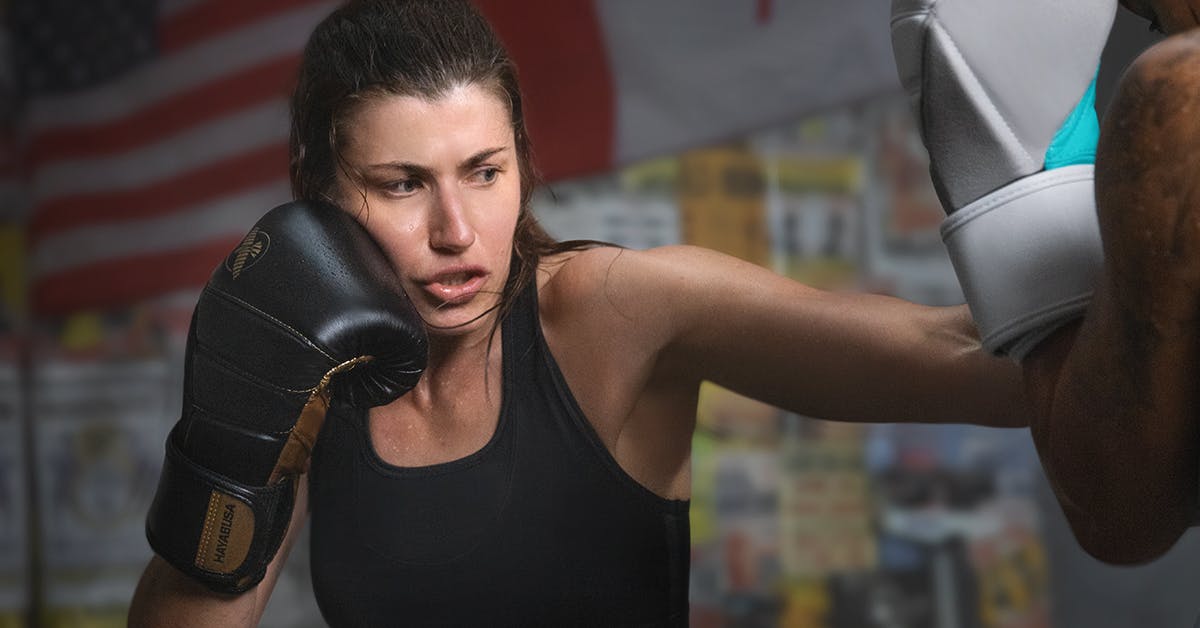4 Muscle Groups That a Boxing Workout Targets
It’s easy to associate different muscles and body parts with different sports—with soccer, your feet, and legs, or with swimming, your arms, and your abdomen. If you said arms and fists in relation to boxing, it’s a fair assumption—but these are far from the only parts of your body involved in a fight or boxing workout. So, what muscles does boxing work out?
Sure, your arms will experience a fantastic workout when you train—but so will your back, core, quads, glutes, and much more.
To help you understand the answer to what does boxing do for your entire body? We’ll explore the impact from head to toe—and the benefits of boxing you can expect to achieve from your workouts.
What Muscles Does Boxing Work the Most?
The truth is, it would probably be faster to list the muscles boxing doesn’t exercise. But so we’re not here all day, we’ll narrow it down to the top 4 muscle groups your boxing routine will target:
#1 Arms: Biceps and Triceps
Your biceps and triceps play a pretty clear role in your boxing workout, and they’re definitely going to be put through their paces with an intense boxing routine. Let’s look at how the arm muscles engage when throwing a straight punch (jab), hook, or uppercut:
- Your biceps take the lead when you throw a hook or an uppercut
- Biceps also engage as you bring your arm back to position after a punch
- Triceps are engaged when you extend your arm to throw a punch
#2 Shoulders: Deltoids and Trapezius
All that force generated by your arm muscles may not do much good without the strength of your shoulders and back providing stability. The muscles in this group include:
- Deltoids – This is the large sheath of muscle that caps your shoulders. It’s used primarily in a jab or straight rear-hand punch.
- Trapezius – These are the triangular muscles that support each side of your neck. These muscles activate as you lift your shoulder blades in your on-guard position.
When you throw a punch in a boxing workout, you can learn to control and channel that force with all the muscles in your upper body, not just your arms. This will help you learn how to get faster punches.

#3 Core: Abs and Lower Back
As you progress through your boxing workouts, you’ll learn to hold yourself tight like a coiled spring. As you keep your guard up in front of you and curl slightly forward to protect yourself, you may start to feel your core muscles engage almost automatically.
When you unwind that coiled energy to throw a punch, the muscles throughout your abs and lower back will propel you forward through a tightly controlled movement—then snap you back into your ready position.
Put it all together, and you can see how every minute of a boxing workout is a marathon core-building session.
#4 Legs: Quadriceps, Glutes, and Calves
Picture one of the all-time boxing greats standing in the classic boxer stance. Imagine that easy bounce from side to side, ready to match any move their opponent throws. It seems effortless, doesn’t it?
But once you try to float like a butterfly through a whole boxing workout, you’ll realize it requires incredible leg strength to maintain that light-footed readiness. Your hips, quads, glutes, and calves all play a part in keeping your stance soft and springy.
On top of that, every punch a boxer throws begins at the ground. All that power and force flows through the legs, snaps the hip forward, and shoots the fist out. By the end of your boxing gym workout, you’ll likely feel the burn just as much as you would after an hour on the treadmill.
What Results Can You Expect from Sparring, Bag Training, and Shadow Boxing?
If you’re aiming to build muscle through your boxing workout, you may wonder how sparring, punching bag training, and shadow boxing training differ in terms of their target muscle groups. For example, what muscles does shadow boxing work compared to sparring?
More studies in the exercise science space are needed to compare the exact differences in the muscle groups worked through these boxing training methods. But we can compare the intensity of these different workouts. Let’s go over a few basic facts about each of these training types:
- Shadow boxing – Also called air boxing, this is a form of practice in which you spar with an imaginary opponent. It’s often used by those at a young age for boxing or by professional boxers to warm up before a fight, cool down after, or just to condition muscles and practice form. What muscles does a shadow boxing workout target? All the same muscles we’ve covered—as long as you control your movements and engage your muscles.
- Bag training – Just what it sounds like: a boxing workout using a punching bag. You may train with a heavy bag, double-end bag, reflex bag, or rotate between different bags to practice different techniques. You may be able to achieve better results in the muscles that affect your punching power through bag training because of the higher impact. However, shadow boxing may better help train muscles important for your form and balance.
- Sparring – Sparring is boxing practice done with a partner. Unlike bag training, when you spar, you’ll face the challenge of a moving target that punches back and does things you don’t anticipate. Sparring isn’t a fight, and you’re not trying to win—the purpose is to build your skills and reflexes. Sparring may be the best way to incorporate the benefits of bag training and shadow boxing into your body workout.
Beyond the outward benefits for your various muscle groups, high-intensity interval training programs like boxing have been shown to:
- Reduce blood pressure
- Aid with weight loss
- Build cardiovascular health
- Reduce stress
Equip Yourself for Success With Hayabusa
What does boxing work out? The truth is, just about everything. There are many benefits of boxing waiting for you to unlock. An excellent boxing gym workout can leave you drenched in sweat and feeling ready to take on the world. But the best boxing workout starts with the right equipment.
That’s where Hayabusa Fightwear comes in.
Hayabusa offers only the best equipment for fit, durability, comfort, and above all, safety. We’re committed to constantly improving and honing our performance products to beat expectations and set new standards for the combat equipment industry.
Don’t settle for technical apparel that isn’t as tough as you are. Shop Hayabusa today.

Sources
BMC Sports Science, Medicine, and Rehabilitation. The feasibility and effectiveness of high-intensity boxing training versus moderate-intensity brisk walking in adults with abdominal obesity: a pilot study.
Chinese Journal of Exercise Physiology. Women boxing athletes' EMG of upper limbs and lumbar muscles in the training of air striking of straight punch.
Frontiers in Psychology. Effects of High-Intensity Interval Training and Moderate-Intensity Training on Stress, Depression, Anxiety, and Resilience in Healthy Adults During Coronavirus Disease 2019 Confinement: A Randomized Controlled Trial.
University of Chichester. Muscular recruitment during rear hand punches delivered at maximal force and speed by amateur boxers.